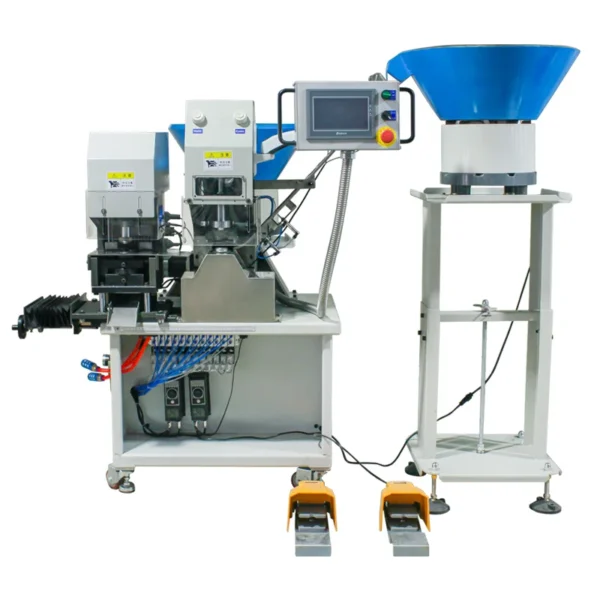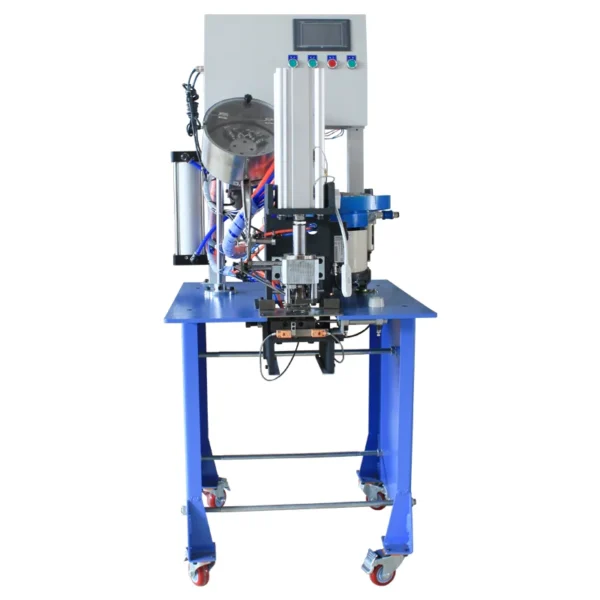What is the Difference Between a Grommet and an Eyelet, first look at people’s definitions of Grommets and eyelets.
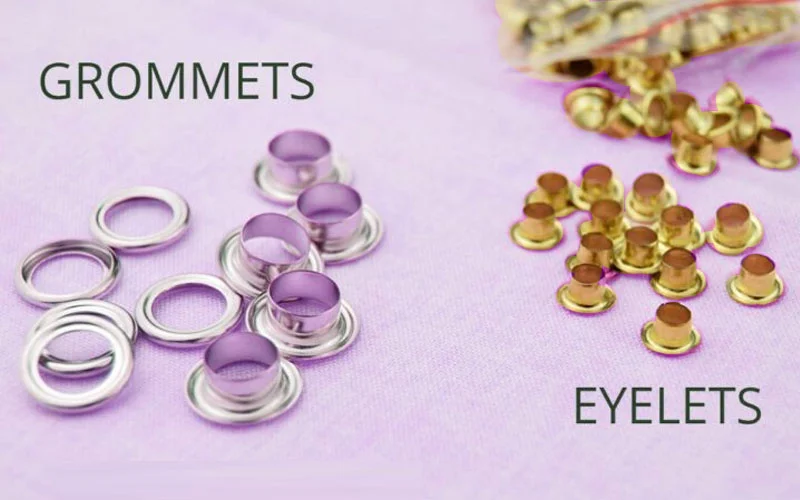
What is the Difference Between a Grommet and an Eyelet?
Learn what is the difference between a grommet and an eyelet based on their importance
Grommets and eyelets are small yet significant components used in various applications, particularly in textiles, crafts, and industrial sectors. A grommet is a ring or edge strip inserted into a hole through thin material, typically a sheet of fabric, to prevent tearing and to cover sharp edges. An eyelet, on the other hand, is a small hole reinforced with metal or plastic, often used to thread a cord or lace.
Understanding the differences between grommets and eyelets is crucial for selecting the right component for your project. Each serves a unique purpose and offers distinct advantages. Misusing them can lead to suboptimal results or even damage the material you are working with.
Brief Overview of Their Uses
From the basic usage point of view, what is the difference between a grommet and an eyelet?
Both grommets and eyelets are used to reinforce holes in materials, but they are often employed in different contexts. Grommets are widely used in heavy-duty applications such as tarpaulins, sails, and industrial fabrics, whereas eyelets are more commonly found in clothing, shoes, and crafts.
Grommets and Eyelets Historical Context
To understand the what is the difference between a grommet and an eyelet, we need to look at the historical background of Grommets and Eyelets.
Origin of Grommets
The use of grommets dates back to ancient times when they were made from natural materials such as bone and leather. They were used to reinforce holes in sails and tents, providing durability and strength in harsh conditions.
Origin of Eyelets
Eyelets have a similarly long history, originating from the need to reinforce holes in clothing and footwear. Initially made from metal, eyelets provided a practical solution for threading laces and cords, making them an essential component in everyday items.
Evolution Over Time
Both grommets and eyelets have evolved significantly over the centuries. With advancements in materials and manufacturing techniques, they are now made from a variety of durable materials, including metals, plastics, and rubber. Their applications have also expanded beyond their traditional uses, finding a place in modern fashion, technology, and industry.
Machines used in the installation of Grommets and Eyelets
automatic curtain eyelet punching & pressing machine, semi-automatic eyelet machine
What is the Difference Between a Grommet and an Eyelet: Raw Materials
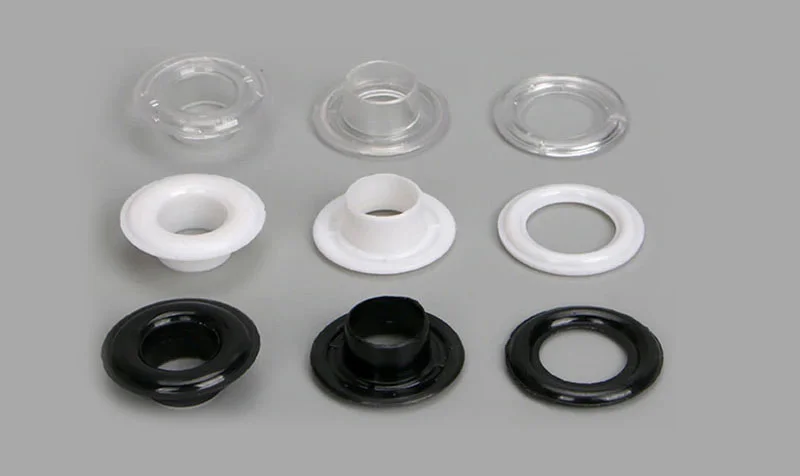
Materials Used in Grommets
Grommets can be made from various materials depending on their intended use. Common materials include:
- Brass: Known for its corrosion resistance and durability.
- Stainless Steel: Ideal for harsh environments due to its strength and resistance to rust.
- Aluminum: Lightweight and corrosion-resistant, suitable for many applications.
- Plastic and Rubber: Used for lightweight and flexible requirements.
Materials Used in Eyelets
Eyelets are typically made from:
- Brass: Common in fashion and crafts due to its attractive finish.
- Aluminum: Lightweight and suitable for many applications.
- Steel: Used for more robust applications where strength is needed.
- Plastic: Used in lightweight applications and where metal might cause damage or corrosion.
Manufacturing Process
Both grommets and eyelets undergo similar manufacturing processes involving stamping, forming, and finishing. The process begins with the raw material being cut into small pieces, which are then shaped into the desired form using specialized machinery. The pieces are then finished to ensure smooth edges and a polished appearance.
What is the Difference Between a Grommet and an Eyelet: Applications
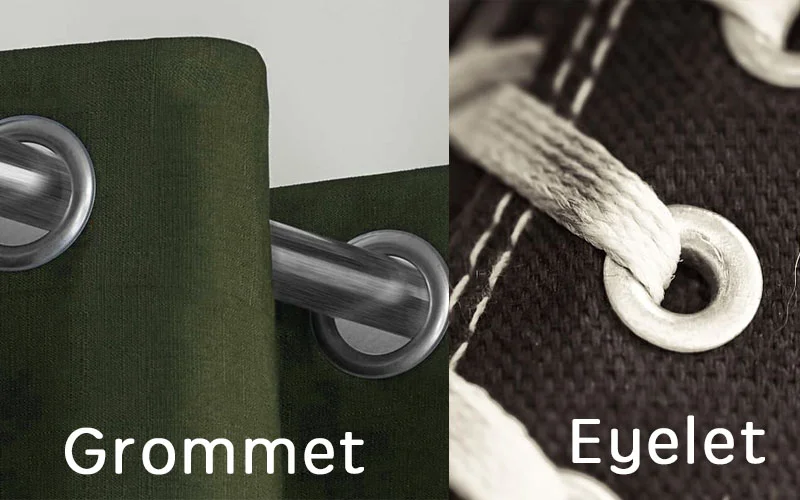
| Uses of Grommets | Uses of Eyelets | Industry-Specific Applications |
|---|---|---|
| Tarpaulins: Reinforce holes for tie-downs | Clothing: Reinforce holes for buttons, laces | Automotive: Protect wiring and cables |
| Sails: Provide strength in marine environments | Footwear: Create durable lace holes | Aerospace: Secure components in aircraft |
| Industrial Fabrics: Manufacturing and heavy-duty applications | Crafts: Scrapbooking and decorative projects | Medical: Used in medical devices and equipment |
| Banners and Signs: Reinforcing holes for mounting | Accessories: Belts, bags, fashion items | Electronics: Protect cables and wires from damage |
Learn from their respective advantages: What is the Difference Between a Grommet and an Eyelet
Advantages of Using Grommets
- Durability: Grommets provide a strong reinforcement that prevents tearing and extends the life of the material.
- Versatility: Suitable for a wide range of applications, from industrial to fashion.
- Protection: They protect cables and wires from sharp edges, reducing wear and tear.
Advantages of Using Eyelets
- Aesthetic Appeal: Eyelets provide a neat and finished look, making them ideal for fashion and decorative purposes.
- Ease of Use: They are easier to install and require less equipment than grommets.
- Lightweight: Ideal for applications where weight is a concern, such as in clothing and accessories.
What is the Difference Between a Grommet and an Eyelet; Their Limitations
Potential Drawbacks of Grommets
- Complex Installation: Grommets require specialized tools and equipment for installation.
- Cost: They can be more expensive than eyelets due to the materials and manufacturing process.
- Weight: Heavier than eyelets, which can be a drawback in certain applications.
Potential Drawbacks of Eyelets
- Limited Strength: Eyelets are not as strong as grommets and may not be suitable for heavy-duty applications.
- Wear and Tear: They can wear out faster in high-stress environments.
- Material Limitations: Eyelets made from weaker materials may not hold up as well as those made from metals.
Comparative Analysis
| Criteria | Grommets | Eyelets |
|---|---|---|
| Strength | Generally stronger and more durable | Less durable compared to grommets |
| Ease of Installation | More complex, and requires more tools | Easier to install with fewer tools |
| Cost | Typically more expensive | Generally less expensive |
| Application Suitability | Heavy-duty and industrial applications | Fashion, accessories, and decorations |
| Preferred Situations | – Heavy-duty applications like tarpaulins, sails, industrial fabrics |
- High-stress environments
- Cable protection in automotive and electronics | – Fashion and accessories such as clothing, footwear
- Light-duty applications where weight and ease of installation are priorities
- Crafts and hobbies like scrapbooking, card making |
Comparative Analysis: Grommets vs. Eyelets
Learn from the comparison: What is the Difference Between a Grommet and an Eyelet
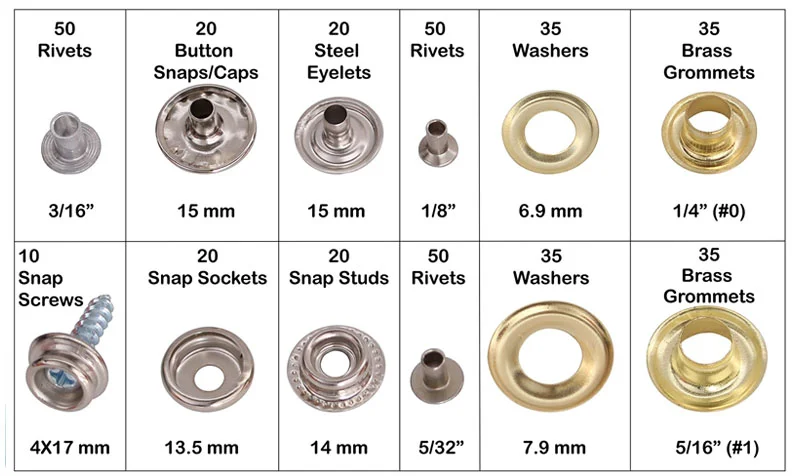
| Factor | Grommets | Eyelets |
|---|---|---|
| Strength | Generally stronger and more durable | Less strong and durable |
| Ease of Installation | Requires more tools and effort | Easier to install, requires fewer tools |
| Cost | Typically more expensive | Less expensive |
| Application Suitability | Heavy-duty and industrial applications | Fashion and decorative uses |
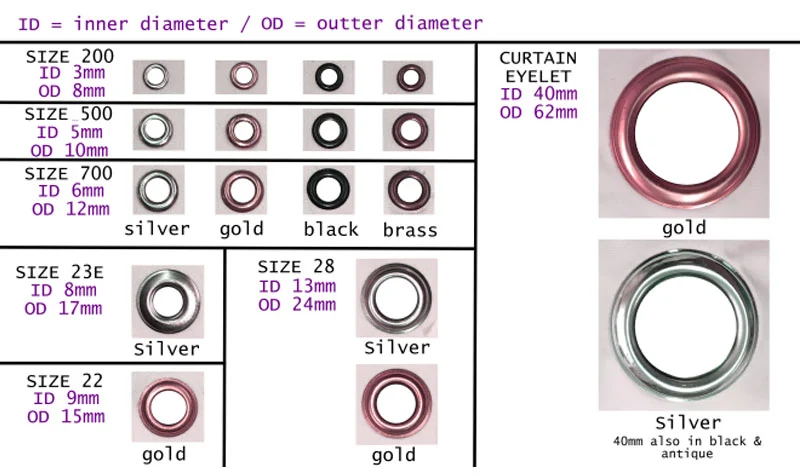
| Situations | Where Grommets Are Preferred | Where Eyelets Are Preferred |
|---|---|---|
| Heavy-Duty Applications | Tarpaulins, sails, and industrial fabrics | – |
| High-Stress Environments | Where durability and strength are crucial | – |
| Cable Protection | Automotive and electronic applications | – |
| Fashion and Accessories | – | Clothing, footwear, and decorative items |
| Light-Duty Applications | – | Where weight and ease of installation are important |
| Crafts and Hobbies | – | Scrapbooking, card making, and other creative projects |
FAQs
What is a grommet?
A grommet is a two-piece component used to reinforce holes in heavy-duty materials. It provides durability and strength, commonly used in applications such as tarps, sails, and industrial curtains.
What is an eyelet?
An eyelet is usually a single-piece component that reinforces holes in lighter materials. It is often used for decorative and functional purposes in clothing, shoes, and craft projects.
Are grommets and eyelets made of the same materials?
Both grommets and eyelets can be made from similar materials such as metal, plastic, or rubber. However, grommets are typically more robust due to their use in heavy-duty applications.
How are grommets and eyelets installed?
Grommets require a two-step installation process involving a setting tool and sometimes a washer, while eyelets are usually easier to install, often requiring just a simple punch or press tool.
Conclusion
Grommets and eyelets are essential components in various applications, each offering unique benefits and suited for different purposes. What is the Difference Between a Grommet and an Eyelet, Grommets provide strength and durability for heavy-duty uses, while eyelets offer an aesthetic appeal for fashion and decorative projects.
When deciding between grommets and eyelets, consider the specific needs of your project. For robust and industrial applications, grommets are the best choice. For lightweight and decorative purposes, eyelets are more suitable.



